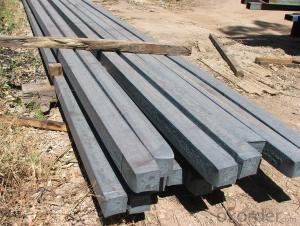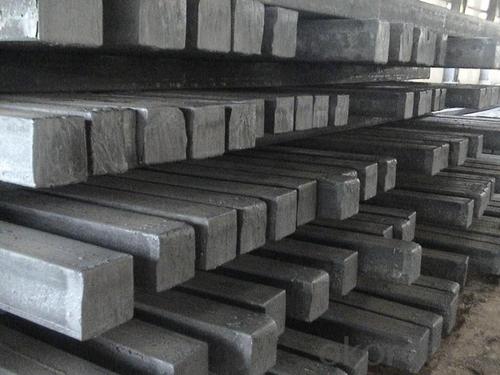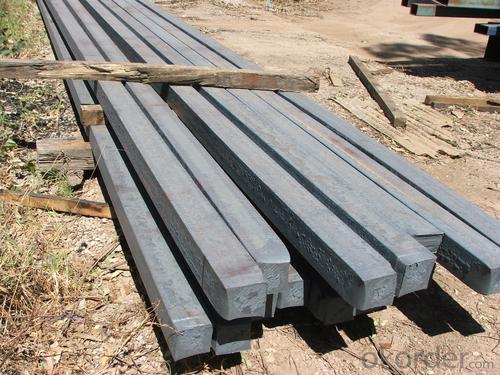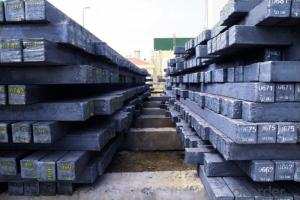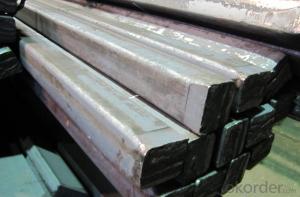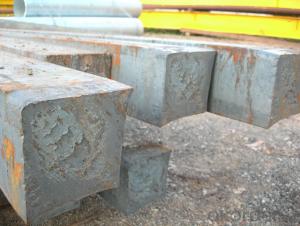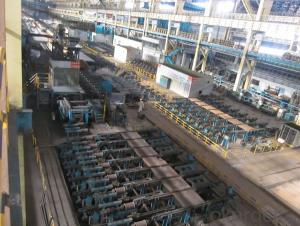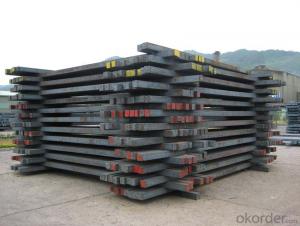Prime Q275 170mm Square Alloy Steel Billet
- Loading Port:
- Shanghai
- Payment Terms:
- TT OR LC
- Min Order Qty:
- 100 m.t.
- Supply Capability:
- 10000 m.t./month
OKorder Service Pledge
OKorder Financial Service
You Might Also Like
Structure of Prime Q275 170mm Square Alloy Steel Billet
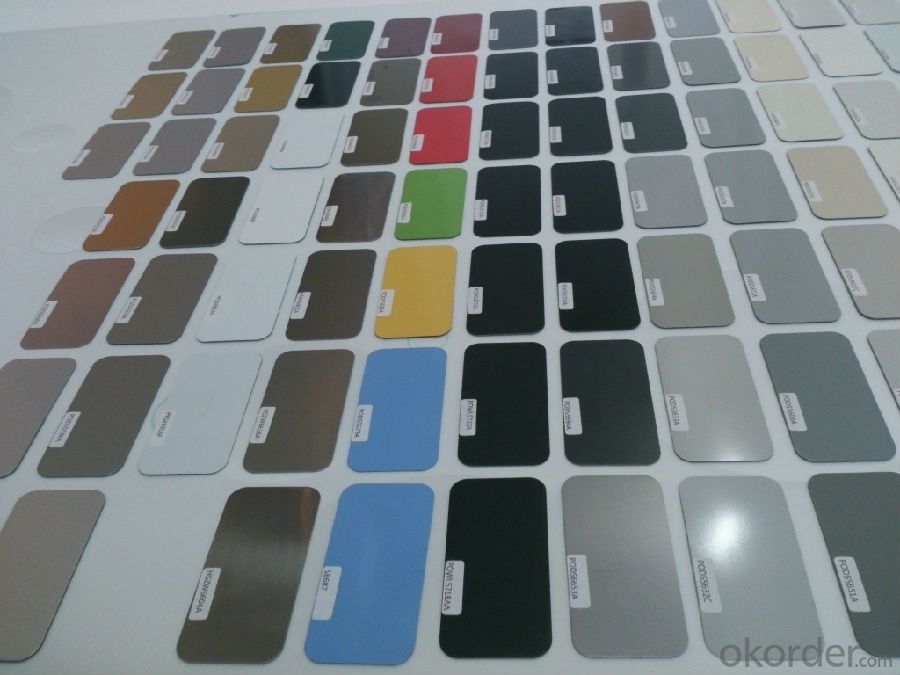
Description of Prime Q275 170mm Square Alloy Steel Billet
1. Prepainted steel coil is coated with organic layer, which provides higher anti-corrosion property and a longer lifespan than that of galvanized or galvalume steel sheets.
2. The base metals for prepainted steel coil consist of cold rolled, HDGI Steel, electro-galvanized and hot-dip alu-zinc coated steel. The finish coats of prepainted steel coil can be classified into groups as follows: polyester, silicon modified polyesters, polyvinylidene fluoride, high-durability polyester, etc.
3. The production process has evolved from one-coating-and-one-baking to double-coating-and-double-baking, and even three-coating-and-three-baking.
4. The color of the prepainted steel coil has a very wide selection, like orange, cream-colored, dark sky blue, sea blue, bright red, brick red, ivory white, porcelain blue, etc.
5. The prepainted steel coils can also be classified into groups by their surface textures, namely regular prepainted sheets, embossed sheets and printed sheets.

Main Feature of Prime Q275 170mm Square Alloy Steel Billet
They were one of several reasons for the wind to be taken out of the sails of the recent oil price momentum. Kuwait’s oil minister said that his country would only commit to a production freeze if all major producers are involved, including Iran. We also had Goldman telling us that oil markets will not rebalance at $40/bbl as it throws a lifeline to cash-strapped US producers.
If it is talk of a production freeze that is behind the rally it shows how low expectations have fallen. It is in the nature of oil people to talk the market up. Any bullish crumb is given exaggerated significance and any port in a storm will do. It is all but fact that the oil market will be tighter in the second half of this year when seasonal demand shoots up and US production continues to decline. It was the same picture last year. If OPEC and key non-OPEC production is frozen that will ensure the daily surplus will fall, but in all likelihood there will still be a surplus and there is an enormous global stockbuild to burn off.
Applications of Prime Q275 170mm Square Alloy Steel Billet
A. Corrugated design makes it excellent waterproof performance
B. Materials as prepainted steel sheets, galvanized steel sheets, galvalume (Al-Zn coated sheets) are available to make corrugated sheet.
C.Those material are durable, anti-corrosion in bad weather for 20-30 years based on it's Zinc(Galvanized) coating or AZ (Galvalume) coating.
D. Different shape of the sheet make it suitable for any style of buildings.
E.Easy to install, no need special tools to fix the sheet.
F.Light weight due to high strength to weight ratio of steel. Light weight means easier handling lower shipping costs, easier installation
G. Different color is availbe base on the RAL Standard make your building more beautiful.
H. We will provide the best solutions if you don't have a exact idea of the specification you want for the steel sheet based on your weather conditions, engineering structure, construction budget and so on.

Specifications of Prime Q275 170mm Square Alloy Steel Billet
Product | Billet |
Material Grade | SGCC / SGCH / DX51D+AZ, etc |
Thickness | 0.6-3.0mm |
Width | 500-1500mm |
Tolerance | Thickness: +/-0.02mm , Width:+/-2mm |
Zinc-coating | Z30-150g/m2 |
Technique | Raw material: Hot rolled steel coil --> Cold rolled_>hot dipped galvalume |
Surface | Dried, Chromated, Unoiled |
Spangle | Regular spangle , small spangle, zero spangle |
ID | 508MM 610MM |
Coil weight | 1-25MT |
Export package | Cardboard inner sleeves, Waterproof paper, galvanized steel covered and steel strip packed |
FAQ of Prime Q275 170mm Square Alloy Steel Billet
We have organized several common questions for our clients,may help you sincerely:
1. How Can I Visit There?
Our company is located in Tianjin City, China, near Beijing. You can fly to Tianjin Airport Directly. All our clients, from home or aboard, are warmly welcome to visit us!
2. How Can I Get Some Sample?
Poor trade figures from China punctured commodity optimism yesterday although they came with warnings that perhaps the numbers were distorted by Chinese New Year celebrations and we will have to wait for the March figures to gain a true picture of the state of China’s landing. Exports for February were -25.4% and imports -13.8% year-on-year.
- Q: What are the different methods of steel billet surface honing?
- There are various techniques available for honing the surface of steel billets, each serving a specific purpose and yielding distinct outcomes. Some commonly employed methods are as follows: 1. Manual Honing: This traditional approach entails the use of handheld honing tools, such as stones or abrasive pads, to manually eliminate imperfections or roughness from the steel billet's surface. Skilled operators meticulously rub the honing tool along the billet's surface until the desired level of smoothness is attained. 2. Mechanical Honing: To automate the honing process, mechanical honing machines are employed. These machines are equipped with rotating abrasive stones or pads that traverse the billet's surface, eliminating any irregularities. Mechanical honing allows for a more consistent and precise honing process, with the ability to control factors such as pressure, speed, and contact area. 3. Diamond Honing: Diamond honing is a specialized technique that utilizes tools coated with diamond particles to achieve a high level of precision and smoothness. The diamond particles on the honing tool offer superior cutting capabilities, enabling the removal of even the smallest imperfections. This method is often utilized for honing high-quality steel billets that necessitate a flawless surface finish. 4. Hydrohoning: Also known as abrasive flow machining, hydrohoning involves employing a viscous abrasive medium that is forced through the internal passages of the billet to eliminate surface irregularities. This method is particularly effective for honing complex shapes or hard-to-reach internal surfaces. The abrasive medium can be adjusted to obtain different levels of surface finish. 5. Electrochemical Honing: Electrochemical honing combines the principles of electrochemical machining and honing. It involves utilizing a specialized electrolyte solution and a honing tool with an electrode to remove material from the billet's surface. This method is effective for honing hard materials and achieving a smooth, mirror-like finish. These represent only a selection of the diverse methods available for honing the surface of steel billets. The choice of technique relies on factors such as the desired surface finish, the complexity of the billet's shape, the material being honed, and the level of precision required.
- Q: Can steel billets be cast from recycled steel?
- Steel billets can be produced from recycled steel. Recycled steel, also called scrap steel, can be melted in either an electric arc furnace or a basic oxygen furnace to create molten steel. This molten steel can then be shaped into various forms, such as long rectangular or square metal bars known as steel billets. The steel industry commonly employs this method to cast steel billets from recycled steel due to the environmental and economic advantages it offers. By recycling steel, we reduce the necessity for raw materials and energy consumption typically required in the production of new steel. Moreover, the use of recycled steel minimizes waste and pollution associated with traditional steel manufacturing processes. Consequently, casting steel billets from recycled steel proves to be a sustainable and practical choice within the steel industry.
- Q: What are the disadvantages of using steel billets?
- There are several disadvantages of using steel billets in various industries. Firstly, steel billets are quite heavy and bulky, making them difficult to handle and transport. This can increase logistical challenges and costs, especially when large quantities of billets need to be moved. Secondly, steel billets require a significant amount of energy and resources to manufacture. The production process involves melting down iron ore and various additives, which consumes a substantial amount of energy and contributes to carbon emissions. This makes steel billets less environmentally friendly compared to other materials. Additionally, steel billets have limited versatility in terms of shape and size. Their initial form is typically a long, rectangular bar, which limits their applicability in certain industries that require complex or intricate shapes. This can lead to additional processing steps and costs to transform the billets into desired forms. Furthermore, steel billets have a high risk of surface defects and internal flaws. During the manufacturing process, impurities and non-uniformities can occur, leading to cracks, inclusions, or segregations within the billets. These defects can compromise the structural integrity and performance of the final product, potentially resulting in failures or safety risks. Lastly, steel billets are susceptible to corrosion, particularly in harsh or corrosive environments. This can significantly reduce their lifespan and necessitate frequent maintenance or protective coatings to prevent deterioration. The costs associated with corrosion prevention and maintenance can add up over time, making steel billets less cost-effective in certain applications. Overall, while steel billets are widely used due to their strength and durability, their disadvantages in terms of weight, energy consumption, limited versatility, potential defects, and susceptibility to corrosion should be taken into consideration when choosing the appropriate material for a specific application.
- Q: Use medium frequency furnace (1 million 500 thousand volt ampere) to produce 1 ton cast steel blank, how much kilowatt hour is consumed?
- Look at the quality of scrap and the operation of workers, power consumption is generally between 550~650.
- Q: What are the main differences between carbon steel and alloy steel billets?
- Carbon steel billets are primarily composed of iron and carbon, with trace amounts of other elements. They are relatively inexpensive and have good strength and hardness properties. On the other hand, alloy steel billets are made by adding various alloying elements such as chromium, nickel, and manganese to enhance specific properties like corrosion resistance, heat resistance, and toughness. This makes alloy steel billets more versatile and suitable for a wide range of applications that require specific material properties.
- Q: Can steel billets be used in the production of sculptures and artwork?
- Yes, steel billets can be used in the production of sculptures and artwork. Steel's strength and durability make it a popular choice for creating large outdoor sculptures or intricate metal artwork. The material can be shaped, welded, and manipulated to bring artistic visions to life, offering artists a versatile medium to express their creativity.
- Q: Can steel billets be used in the production of pipes?
- Yes, steel billets can be used in the production of pipes. Steel billets are the raw material for the manufacturing of various steel products, including pipes. The process involves heating the steel billets to a high temperature and then shaping them into pipes through different methods such as hot rolling, cold rolling, or extrusion. Steel billets provide the necessary strength, durability, and uniformity required for the production of pipes. Additionally, they can be further processed and treated to meet specific requirements such as corrosion resistance or enhanced mechanical properties. Therefore, steel billets play a vital role in the production of pipes and are widely used in the steel industry for this purpose.
- Q: How are steel billets used in the manufacturing of pumps and compressors?
- Pumps and compressors rely heavily on steel billets, a crucial raw material for their manufacturing process. These semi-finished steel forms are transformed into different components and parts of these devices. To prepare steel billets for shaping, the initial step involves heating them to a high temperature to make them malleable. Once heated, the billets go through various metalworking techniques like forging, rolling, or extrusion. By subjecting them to these processes, the billets are converted into the desired shapes and sizes required for specific pump and compressor components. In pump manufacturing, steel billets are utilized to fabricate impellers, responsible for fluid movement and circulation. The billets are shaped according to the impeller design through machining or casting procedures. Similarly, for compressors, steel billets are used to create vital components like cylinders, pistons, and connecting rods, which facilitate gas compression and movement. The preference for steel billets in pump and compressor manufacturing stems from their advantageous properties, such as strength, durability, and corrosion resistance. These properties are vital for ensuring the efficiency and longevity of these mechanical devices, especially when they operate under high pressures, temperatures, and harsh working conditions. In conclusion, steel billets play a fundamental role in the manufacturing process of pumps and compressors. They provide the necessary raw material for shaping and creating various components that enable these devices to function effectively.
- Q: How does billet caster pull out billet cracking?
- If it is a surface crack, it is necessary to take slow cooling measures to the entrance and exit of the mold and minimize the harmful elements such as parathion
- Q: After processing to the color coating board, is there a fare increase of 1000?The price of galvanized coil is about +350 per ton of cold-rolled steel at present What about the cost of billet to cold rolling?What is the final cost of making the color coated sheet? How do you figure that?
- I think that the cost of steel billet plus manual consumption plus electricity and other costs divided by the finished product is greater than the cost per ton
Send your message to us
Prime Q275 170mm Square Alloy Steel Billet
- Loading Port:
- Shanghai
- Payment Terms:
- TT OR LC
- Min Order Qty:
- 100 m.t.
- Supply Capability:
- 10000 m.t./month
OKorder Service Pledge
OKorder Financial Service
Similar products
Hot products
Hot Searches
Related keywords





